Promoting international research mobility and creating international talent circulation is an essential condition for robust research and development. To this end, it is important to internationalize the research ecosystem, promote international human resource exchange, and ensure that Japan is firmly integrated into the international brain circulation network. Under this special topic, we will introduce the current status and challenges of Japan's research efforts to promote international brain circulation to produce outstanding research results as well as the attractiveness of Japan's research environment, which is the key to attracting foreign researchers, through a series of interviews with relevant people in the field. In this interview we spoke to Dr. Kazuhiro Hono, President of the National Institute for Materials Science (NIMS).
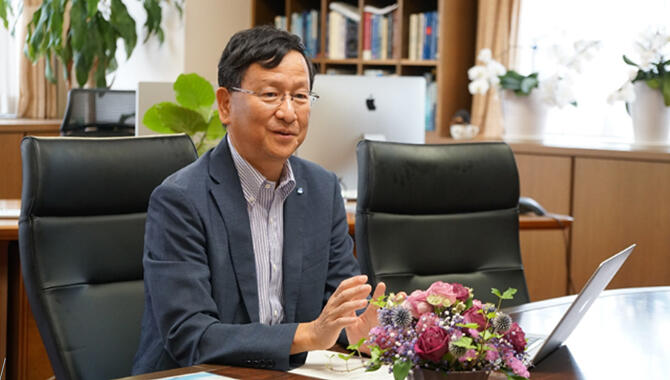
An overview of NIMS and its "Mid- to Long-Term Plan"
── First, could you provide an overview of NIMS, including the "Fifth Mid- to Long-Term Plan," newly launched this fiscal year.
NIMS is a national research institute focusing on materials research. Over the years, world-class scientific achievements have been undertaken in materials development research. NIMS was officially defined as a Designated National Research and Development Institute in 2016. The mission of the Designated Research and Development Institute is to deliver world-class scientific products. We need to achieve the top ranking in Japan and consistently deliver world-class creative results. This is exactly our mission that we aim to fulfill in our seven-year Mid- to Long-Term Plan.
Since 2012, NIMS has consistently held the top position in Japan for the number of citations in the field of materials science, as reported by Clarivate Analytics. Furthermore, NIMS surpasses other research institutions in Japan in various key metrics, including the ratio of top 10% papers, the number of top 10% papers per researcher, and performance over the last five years.
However, it is essential for national research institutes to function as organizations that drive technological breakthroughs and innovations, rather than merely focusing on the quantity of paper citations. We believe that developing these various tasks in a well-balanced manner is essential.
As defined in the Mid-Term Plan, NIMS research can be largely divided into two main research fields: R&D to fix societal problems and fundamental research leading to technological innovations. The former covers four areas: energy and environmental materials, magnetic and spintronics materials, electronic and optical functional materials, and structural materials, in which NIMS has a long-lasting tradition of research.
The latter is fundamental research aiming at creating new technological breakthroughs from scratch and encouraging researchers to freely pursue their own ideas. Tailoring research themes in this manner is vitally important for attracting outstanding researchers. In this fundamental research area, there are three targets: the first one is quantum/nanomaterials that is to be pursued at the Research Center for Materials Nanoarchitectonics (MANA), a member of the World Premier International Research Center Initiative (WPI). At MANA, researchers conduct basic research and focus on producing novel and high-impact results. Basic research, such as realizing materials based on quantum phenomena, is indispensable to the development of the next generation of materials.
The second target of fundamental research is the research on polymer and bio-materials, which we set to work this year. When NIMS was founded in 2001 through the merger of the National Research Institute for Metals and the National Institute for Inorganic Materials Science, the research activities on metal and ceramic materials were at the center of the institute activities. Upon the merger, NIMS was designed to work on all research areas of materials science, including polymers and biomaterials. However, scientists with expertise in these fields have been dispersed throughout the institute, rendering it less apparent to external observers that NIMS is actively engaged in research related to polymers and biomaterials. As a result, we established a dedicated structure to address the emerging research field of polymers and biomaterials, unifying all researchers involved in these activities.
The third target of fundamental research is materials development driven by data science. Continuing the policy of "Creating materials through data science," championed by former President Kazuhito Hashimoto, we remain committed to advancing materials development through the utilization and enhancement of data-driven methodologies and advanced analysis techniques. The data-driven research initiative has been revitalized within a new laboratory, known as the Center for Basic Research on Materials (CBRM), contributing to the fundamental research that underpins all materials development efforts.
In advancing data-driven research, the accumulation of material-related data is essential, alongside the development of tools that render such data applicable to materials development. This will involve the establishment of a material data platform, utilizing the accumulated data and harnessing the capabilities of AI technology to facilitate this process. Both the R&D endeavors aimed at addressing societal challenges and the fundamental research initiated through bottom-up proposals for new materials science are promoted as an interconnected duo. The development of the materials data platform will serve as a bridge between these two approaches.
Our efforts are made on fulfilling the seven-year Med- to Long-Term Plan. Nonetheless, since society's needs are always changing regardless of NIMS plans, we will accommodate our research topics and relevant staff in a flexible and agile manner when necessary. Furthermore, we will also identify new priority research areas and enable researchers to shift to the new area from existing laboratories.
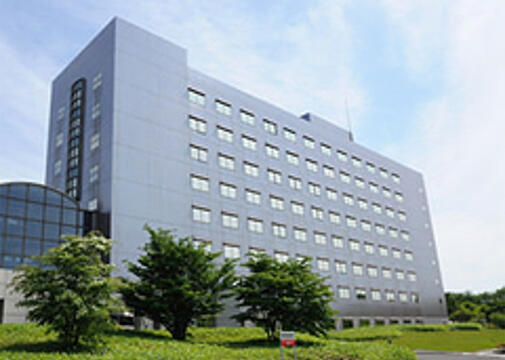
From the NIMS website
Human resource strategies to produce outstanding research outputs
── Please tell us what NIMS is particularly focusing on among the various challenges.
As NIMS is not a university, its unequivocal mission extends beyond the production of results solely measured by statistical figures, such as the number of publications. It encompasses a commitment to fundamental research that actively contributes to the cultivation of innovation and the growth of industries. To achieve this objective, the primary focus is placed on formulating an effective human resource strategy that ensures the acquisition of outstanding talent in the field of materials research. Risk management is a critical component of any organization, and for NIMS, the most significant risk is the potential loss of its appeal, which could dissuade exceptional talent from affiliating and diminish the caliber of research outcomes. Accordingly, we prioritize the acquisition of talented human resources as the foremost consideration in our risk management strategy.
We are in a perpetual competition with universities to attract exceptional talent. NIMS has persevered thus far owing to its advantageous combination of a substantial research campus, excellent facilities, and an environment conducive to focused research efforts. Nevertheless, there remains a gap that needs to be addressed. While universities are often bustling with a dense population, NIMS has a less densely populated environment. However, a more vibrant environment is needed for research activity. We should aspire to attract a greater number of young researchers and students, thereby fostering a more dynamic atmosphere for research.
To facilitate this, two types of cooperative graduate school programs, including domestic and international, are operated at NIMS. Within the domestic system, we establish agreements with prominent Japanese universities and secure affiliated faculty positions. For instance, the University of Tsukuba has established the Subprogram in Materials Science and Engineering, operated in collaboration with NIMS as a standalone major. In this initiative, 30 positions have been secured as professors and associate professors.
Within this subprogram, graduate students at the university have the opportunity to serve as NIMS Junior Researchers, actively engaging in NIMS research projects. Currently, we are collaborating with six universities: University of Tsukuba, Hokkaido University, Yokohama National University, Waseda University, Osaka University, and Kyushu University. There are 68 affiliated faculty positions allocated to NIMS, and 160 doctoral and master students are conducting research at NIMS as NIMS-affiliated graduate students.
In fact, the students are stationed at NIMS and pursue research here. In the case of University of Tsukuba, for instance, the agreement designates NIMS's campus as an extension of their own. Consequently, the research activities of students can be conducted seamlessly at NIMS. Given that a significant portion of students who enroll in NIMS through the cooperative graduate school system possess international backgrounds (accounting for two-thirds of all students), education is conducted in English.
The second form of cooperative graduate school system is the International Cooperative Graduate Program, which involves agreements with 33 universities, including four Indian Institutes of Technology. Currently, this program ranks as the world's top choice for attracting talented students. In the case of the domestic cooperative graduate school system as described earlier, graduate students can directly join NIMS where they are designated as NIMS Junior Researchers. However, a similar process cannot be applied to foreign students. Therefore, on the premise of conducting joint research with the students' university supervisors, foreign doctoral students are welcomed in NIMS for a duration of up to one year. During this period, they carry out their research at NIMS, with the outcomes forming an integral component of the agreed-upon joint research.
NIMS researchers will collaborate with the partner university's supervisors to oversee the doctoral students' research activity and contribute as sub-reviewers in the doctoral dissertation review process. Approximately 30 students are annually accepted.
I often hear foreign students working in NIMS express their satisfaction with their experience here, saying that the institute provides access to a diverse range of advanced equipment, allowing them the unique opportunity to operate it themselves. This hands-on approach is greatly appreciated, as it contrasts with foreign universities such as those in Europe where professional staff typically manage equipment, restricting students from direct operation. As such, this system offers opportunities that universities often cannot provide, enabling both parties to collaborate on advancing joint research while simultaneously nurturing students' growth. NIMS has established agreements with leading universities worldwide, encompassing institutions in Asia, Europe, the United States, and other regions.
There are a considerable number of students who express interest in coming to Japan, and we extend invitations to such aspiring students.
── NIMS also has a highly globalized structure: International Center for Young Scientists (ICYS).
ICYS represents an original program tailored for young talented researchers, distinct from traditional post-doctoral programs. It falls under the category often referred to as fellowships. While Japanese candidates are eligible to apply for the program, the majority of ICYS participants are non-Japanese researchers. The selection process for ICYS membership is highly competitive, with an acceptance rate of only 3%. Notably, approximately 30% of these selected researchers eventually secure permanent positions as NIMS researchers afterwards. The substantial contribution of ICYS to NIMS research is quantitatively evident, as 16% of the authors featured in the top 1% of NIMS papers originate from ICYS. When examining the Field-Weighted Citation Impact (FWCI), an index employed for paper evaluation, the NIMS average stands at 1.5. Notably, ICYS achieves a remarkable FWCI of 1.84, surpassing both the NIMS average and the global average of 1.0. Such empirical evidence demonstrates that fostering internationalization in this manner leads to statistically superior publication performance. Some foreign researchers of NIMS are running startups.
The presence of a significant number of foreign researchers brings a distinct advantage, as it allows for the conduct of seminars and other activities in English. This creates an environment where Japanese researchers at NIMS are trained so that they can comfortably communicate with their foreign counterparts when traveling abroad. Advocating "The importance of internationalization" or urging "Let's make everything in English" can be quite challenging without direct interactions and engagements with foreigners. Within NIMS, 14% of the permanent researcher positions are held by individuals from foreign backgrounds. When including post-doctoral and graduate students, the proportion of foreign nationals among the entire researcher population reaches 33%.
In the United States, a significant majority of doctoral students in graduate programs come from foreign nations, while Europe also hosts numerous graduate students and post-doctoral fellows from countries such as India. Certain individuals may hold Chinese nationality but are engaged in research activities in Australia, for example. Such a fact highlights the challenges in accurately categorizing individuals by their country of origin, underscoring the complexities of achieving genuine internationalization.
── As previously mentioned, the primary objective for a research institute is to generate outstanding research outcomes. Internationalization, in and of itself, should not be the ultimate goal but rather a means to facilitate and enhance the quality and impact of research endeavors. An important approach to producing good results involves the challenges of internationalizing the research environment as well as enhancing international talent mobility. Internationalization is not a fresh topic for Japan. However, it is now gaining renewed prominence in light of Japan's declining research power, because it is proven that internationally competitive research outputs are strongly correlated to the international talent mobility and circulation. As you highlighted earlier, a pivotal risk management strategy entails the recruitment of excellent researchers, including those of international caliber. The inception of MANA, a project in which you were personally engaged, is founded upon this strategy.
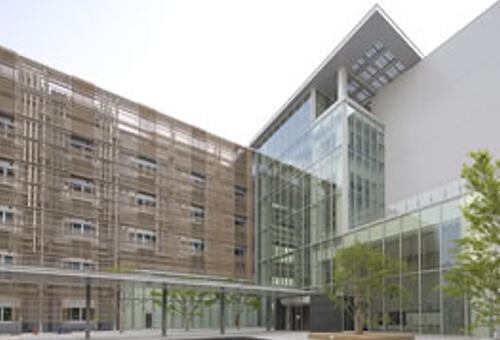
From the NIMS website
I agree that internationalization is intricately linked with research outputs.
Right from its inception, this has been the fundamental concept underpinning the establishment of MANA. Despite seven years having elapsed since the conclusion of the program-specific funding period, MANA continues its activities with sustained support through NIMS' conventional operating subsidy. After all, the publication statistics confirm that MANA's achievement is quite exceptional. Nonetheless, these achievements may not always lead to an innovation at all. That is the difficult part of the challenge.
── In addition to actively welcoming foreign researchers, are there any programs that offer young Japanese researchers opportunities to gain more exposure to international environments and experiences abroad?
For young researchers, NIMS provides an exchange program that enables them to spend time at overseas research institutes. Typically, this program allows for a one-year stay, but it can be extended to a total of two years in certain cases.
We encourage young researchers to immerse themselves in a different culture at an early stage in their careers. However, it's evident that the program has seen fewer applicants, partly due to the suspension of the program for three years amid the COVID-19 pandemic. It appears that there is now a kind of inward-focused trend among Japanese researchers in terms of international research mobility.
In terms of experiments, the exceptional facilities and research environment at NIMS make it challenging for researchers to venture abroad, as there is concern about potential disruptions to their ongoing experimental research conducted at the institute. In contrast, for theoretical researchers, there is a relatively greater sense of flexibility to explore research opportunities elsewhere. Besides that, web-based collaborations can be also conducted relatively easily. We do encourage them to pursue international experiences, especially during their early career stages, but it appears that the response in this regard has not been particularly robust. Interestingly, it is the foreign researchers who hold permanent positions that often express a desire to pursue opportunities abroad. A comfort zone that Japanese researchers are enjoying in Japan might be so strong that they tend to hold a more inward-looking perspective.
Efforts to attract foreign talent
── Please describe your specific efforts to attract foreign talent to NIMS.
In terms of cultivating and supporting an English-language working environment, I believe that this has been refined based on the experiences gained from programs such as ICYS and MANA, and have been further tailored to meet the needs of foreign researchers. This approach aims to create an inclusive and comfortable environment for researchers who primarily communicate in English. All official documents are composed in English, and a substantial number of seminars are also conducted in the same language. Having served as a group leader, director, and in other capacities, I have ensured that all members of my group communicate in English. When a certain percentage of foreign individuals are part of a group or attending a meeting, English has to become the common language of communication to ensure effective interaction among participants. In certain groups where there are no foreign members, English is still used as the primary language for daily communication within the laboratory. The situation largely depends on the policy of the group leader.
When foreign post-doctoral fellows and students become part of the group, the communication language naturally transitions to English, and the institute actively promotes and supports this linguistic shift. NIMS has established the Global Human Resources Support Office within the Division of International Collaborations and Public Relations. Everyone at MANA, including the supporting staff, speaks English. I believe we are making considerable progress in this regard.
All open calls for researcher positions are published in both Japanese and English, with applications being accepted from candidates of all nationalities. Efforts are also underway to align our salary structures as closely as possible with international standards. The salary tables for ICYS Fellows and NIMS Junior Researchers had not been revised for 15 years; however, considering the domestic salary benchmarks, our updated grades now rank among the highest in Japan and are internationally competitive.The organization offers salaries to both doctoral and master's students. Although this practice has gained widespread acceptance in Japan over the past year or two, it is noteworthy that NIMS initiated this approach 25 years ago.
The underlying idea is that since researchers come to NIMS to contribute to its research endeavors, it is only natural that they should receive appropriate compensation for their valuable work. In addition to their salaries, ICYS fellows are entitled to a research stipend of 2 million yen per year.
Challenges in promoting true internationalization
── Fostering international human resources and exploiting foreign talent are major challenges to be squarely tackled by Japan's society, which must remain resilient in the face of a low birthrate and an aging population. Beyond the scope of NIMS, what do you think is necessary for Japan to address these issues?
Now that the importance of internationalization is recognized again, various financial measures are being taken and new programs organized. When Japanese researchers are sent to foreign labs, they often bring with them their own research funds and salaries obtained from Japan. This method can be described as "A duck approaches carrying a leak." (A Japanese proverb meaning 'A stroke of luck') Such practice is undoubtedly advantageous for a receiving laboratory, yet the question that emerges is to know whether this signifies genuine internationalization.
Nowadays, Japan is falling behind in terms of internationalization while it has been dawdling for some time in addressing this challenge. A salient example of this decline is the diminishing presence of Japanese scientists in representative international conferences and other academic gatherings. Even when a list of participants includes some Japanese individuals, their presence is scarcely noticeable, as they often remain silent during meetings.
Should Japan be earnestly committed to internationalizing itself, a prudent measure would be to regularly send a specified number of university students to study at leading graduate schools abroad. In other words, the quantity of full-time students who get into overseas universities by taking the GRE or TOEFL, should be augmented. In that case, we can expect that these Japanese students who endured tough competition abroad with other students under the same conditions come back to Japan at some time in the future and play an active role. I went to the U.S. for study and research in 1985 and it was in the same year that the door was opened to China and the first generation of excellent Chinese students began to arrive in the U.S. One of the reasons, I contend, that Chinese science and technology has progressed so rapidly over the years is the yield of such an aggressive policy of sending students for studying abroad.
The predicament in Japan is in fact the desire of professors to retain the finest students within their laboratories. I think that a substantial change will not occur unless we implement something significant at the policy level, such as proactively sending graduates and students with master's degrees in science and engineering to overseas universities or enrolling a certain percentage or more of graduate students from other universities to enhance talent mobility.
Furthermore, I believe that a principal underlying cause of Japan's diminished competitiveness is due to the decline in the number of doctoral students in graduate programs. International competitiveness is gauged by publication performance, and the competitiveness of each country is indicated based on such data. It stands to reason that a decline in the number of graduate students would lead to a reduction in publication performance. I believe that this is the precise issue we must diligently strive to alter.
Enhancing NIMS branding
Together with our human resource strategy, we aim to enhance the brand power of NIMS. Brand power is essential for attracting world-class talent. While NIMS possesses an advantageous research environment and facilities, brand power remains the most decisive factor in determining the research institute that the most globally sought-after talent ultimately desires to select. In our efforts to enhance the NIMS brand, we are actively endeavoring to make our research outputs and other activities perceptible to external audiences. In this regard, the name of our institute (the National Institute for Materials Science) is consistently referred to by its abbreviation, NIMS, which is also registered as a trademark. This constitutes an integral component of our branding strategy.
(The interview held on June 23, 2023, at NIMS in Tsukuba, Ibaraki)
Interviewer Yoshihiro Higuchi
Director for Global Strategic Issues, Japan Science and Technology Agency (JST)
(Editor of the original article in Japanese:
Nobuhiko Horiuchi, Chief Editor of Science Portal China)
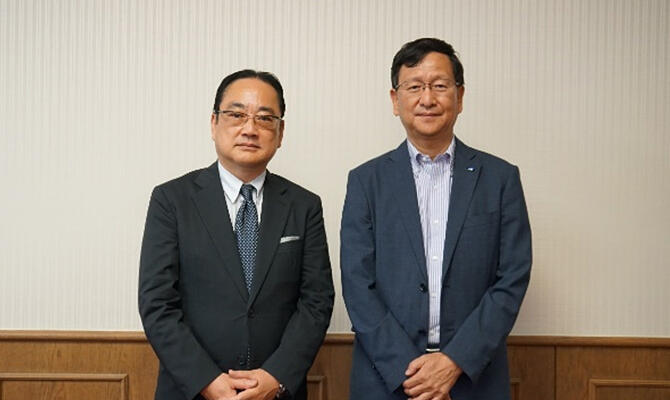
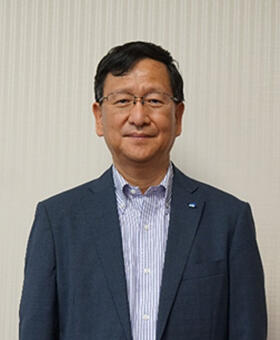
Profile
Kazuhiro Hono
President/Fellow
National Institute for Materials Science (NIMS)
Professor (collaborative), Graduate School of Science and Technology, University of Tsukuba. Graduated from the School of Engineering, Tohoku University, March 1982. Obtained Master of Engineering from Tohoku University in March 1984, and a PhD, Doctor of Engineering from Pennsylvania State University in May 1988. In 1995, nominated as a senior research scientist in the Physical Properties Research Department of the National Research Institute for Metals, the predecessor of NIMS. Has been in the current position since April 2022 following positions: Director of the Magnetic Materials Center; Director of the Magnetic Materials Unit; Director of the Center for Magnetic and Spintronics Materials Research; Executive Director of NIMS; and others.
<Overviews of NIMS>
Designated National Research and Development Institute, National Institute for Materials Science (NIMS) NIMS aims to improve the level of materials science and technology by conducting in a comprehensive manner fundamental and basic research and development related to materials science and technology.
NIMS homepage: https://www.nims.go.jp/eng/index.html
Produced by the Science Japan Editorial Team




